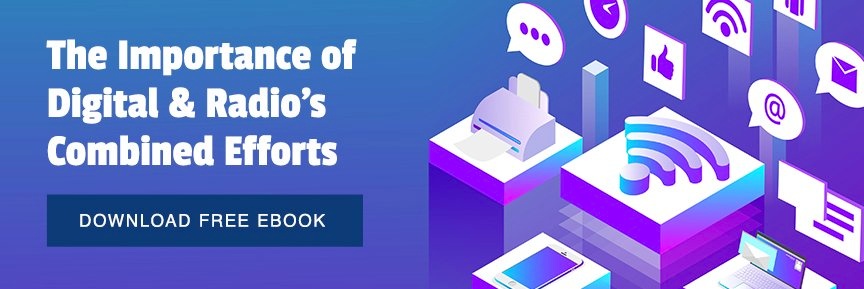Due to privacy concerns, cookie tracking has gotten some negative coverage in recent years. Some companies have vowed to reduce business access to data that allows them to target their advertising. First-party data is an excellent alternative way to gain insight into your audience without the need for invasive cookie tracking strategies. Since customers opt-in to providing information, it allows you to respect their privacy while gaining their trust. Implementing a first-party data system into your marketing plan can help your business grow substantially without investing too much in the beginning.
Quick Tips to Collect First-Party Data
First-party data is data that your company collects about your customers. You can accomplish this in many ways, but perhaps the most popular and effective is through an email marketing campaign. With email marketing, you can see which types of emails lead to the most opens and conversions, allowing you to adjust your future emails to make them more effective.
Some of our other favorite methods for collecting first-party data include:
Adding a Lead-Gen Form to Blog Subscriptions
Lead-gen forms are templates that you can attach to social media posts, emails, or blogs. They make it simple for prospective customers to click a call-to-action button, which inputs their contact information into the form. It reduces the amount of work required on the customer's part, which can help you get more contact information in a short amount of time!
Encourage Employees to Build Rapport
Your employees are the face of your company. As the people your customers see on a regular basis, they’re in a unique position to build lasting relationships with them. That face-to-face time spent together lets customers get to know your company and culture, and it can let your employees leverage that to expand the resources and offers available to benefit customers. They can use their intuition or simply help customers learn about sign-ups or offers to provide their information to your email or text lists. It feels more genuine when another person asks them. Even if they don’t sign up at the time, they may become more receptive to email or online outreach at a later point.
Furthermore, you can offset some of this by including offers at the cash register or with calls-to-action in email receipts. That removes the direct need to ask customers, but you can still benefit from quality customer service in gaining their trust.
Including Surveys in Emails or Social Media Posts
Surveys are an excellent way of collecting first-party data that tells you more about your customers' preferences and thoughts regarding your products, services, and brand. It can be hard to get people to fill out surveys voluntarily. Many customers will fill out a short survey when they see it in their email or social media posts, especially if there is an incentive after they complete it.
Perhaps your company can offer a coupon on future orders or exclusive access products for those who complete the survey by a particular deadline to help you get a larger volume of results, making your first-party data as helpful as possible.
Launching a Quick Contest
Looking to get a bunch of data fast? One helpful way to help your company increase the number of contacts and data available is by hosting a quick contest. You can gather a high volume of new contacts by collecting email addresses in exchange for an entry to a giveaway for a prize that appeals to many different types of people. You can use contest platforms to gather email addresses or other contact information or host it entirely on your own.
Developing a Feedback Questionnaire
Businesses frequently ask customers for feedback to help them better serve their customers, and questionnaires can provide companies with valuable insight they may not otherwise have. Questionnaires, like surveys, can be sent to customers' inboxes, but you can also have them available in your physical store. They usually include different questions, including closed-ended, open-ended, fill-in-the-blank, and long-form.
If you decide to do a questionnaire, ensure it isn't too long and takes too much time. Narrow down the information you need to gather and develop a questionnaire that focuses on those topics only. You want to simplify for customers to provide their information so as not to risk them quitting before finishing. Including the number of questions or time expected to complete at the beginning of the survey also helps to set your customers' expectations, which increases their likelihood of filling everything out.
Investing in Brand Awareness to Build Trust
People will voluntarily interact with companies that they trust, but it can be challenging for companies to build enough trust in the first place. Brand awareness marketing can help facilitate trust by increasing the number of times potential consumers see or hear about your brand. The more familiar they are with your logos, color scheme, and marketing messages, the more likely they will view your brand as trustworthy.
Consumers won't usually buy products from brands they don't trust and won't answer survey questions or give out contact information without first believing the company is trustworthy.
Build First-Party Data into Your Next Campaign
If you want to begin implementing first-party data into your next campaign, it often pays to start small while learning how to collect it and what it can do for you. One of the best first steps for implementing first-party data is to make new surveys and promotions that allow you to collect more first-party data. Explore new platforms to see which ones can help you reach new customers without the need to use targeting and cookie-tracking.
From there, you can begin to make your next marketing campaign robust because you can plan it more around the first-party data you have collected. You'll have a much better understanding of what your customers are looking for and what they value because of the insight and knowledge you can gain from first-party data.
Target Marketing Is Changing, but You Can Keep Up
The world of target marketing continues to change rapidly, but you can keep up by investing in new strategies earlier to help your company make the best transition possible. The idea of first-party marketing isn't necessarily new, but it can ensure that you and your company stay informed of your customers' needs.



